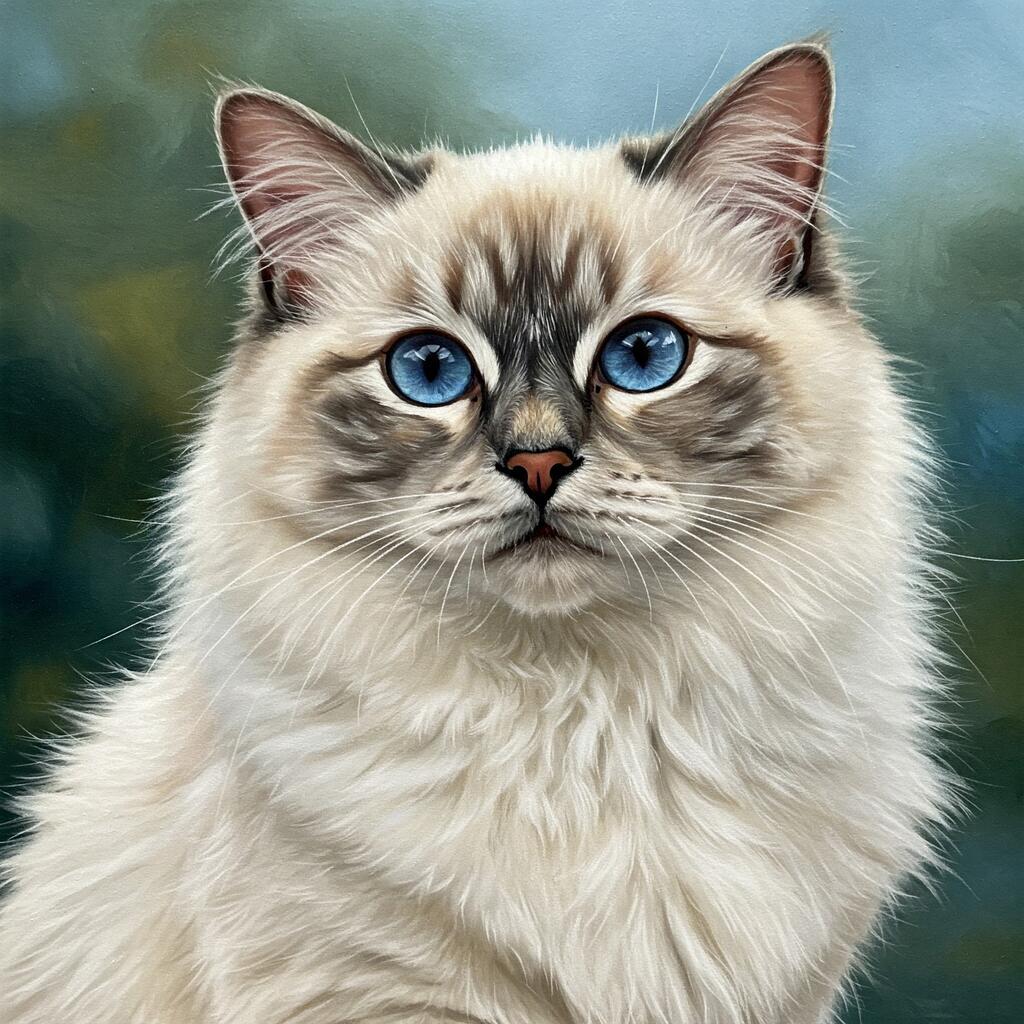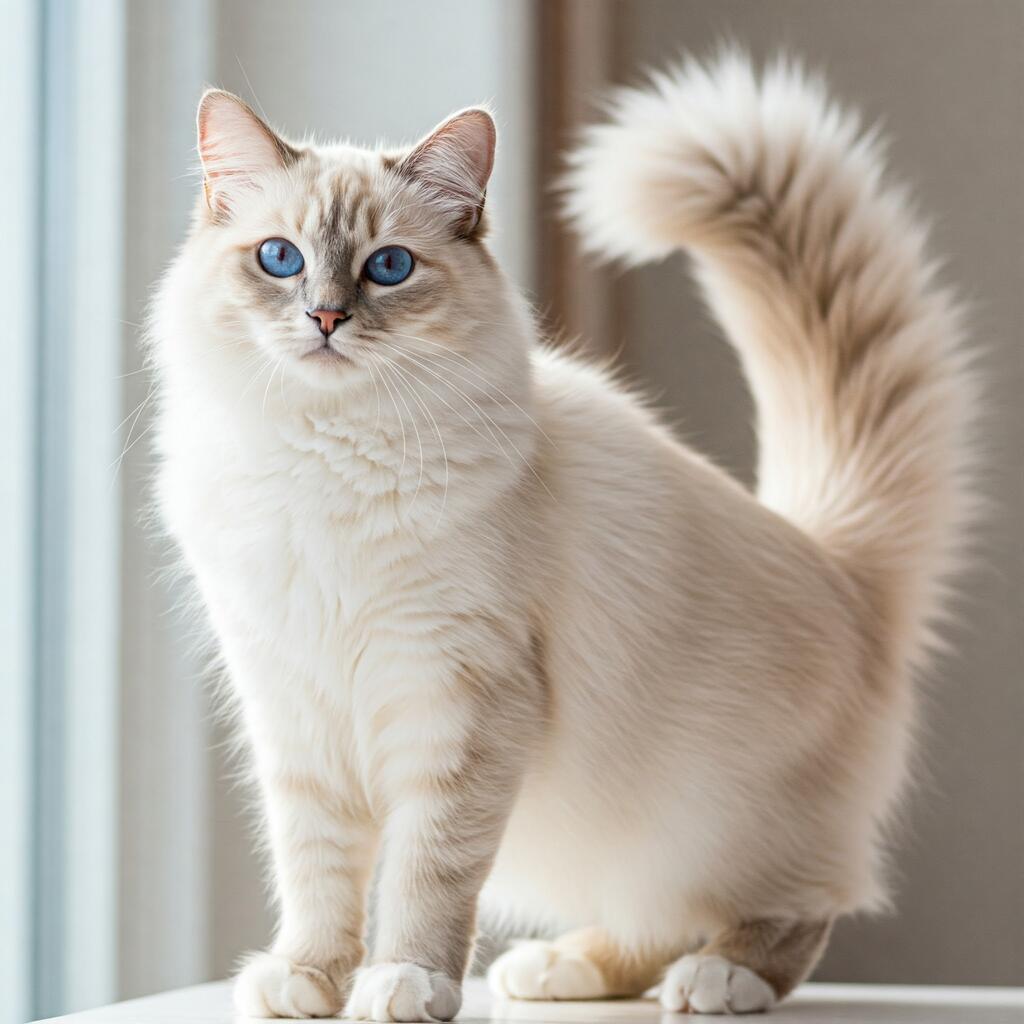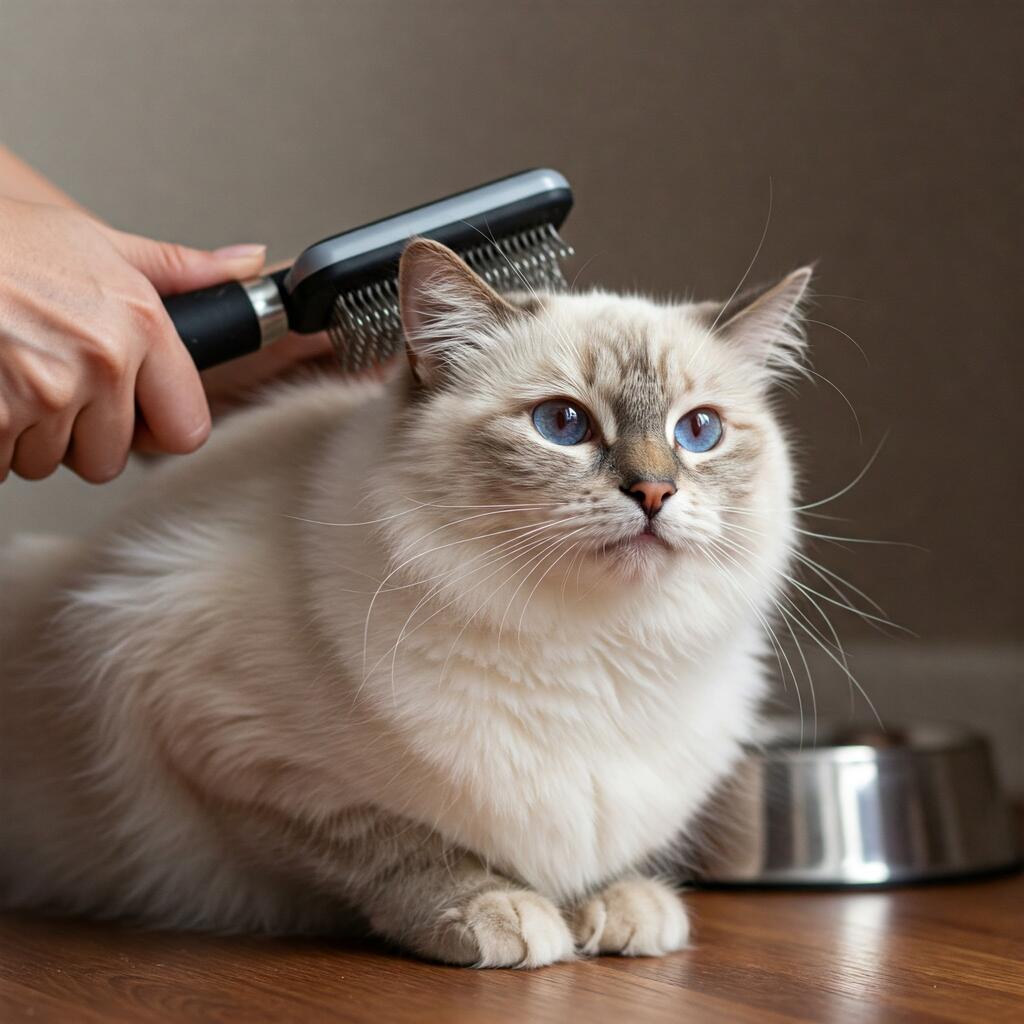
Birman Cat: Elegant, Affectionate, and Friendly Pet
The Cat Birman, as its name suggests, comes from Burma where it is considered a sacred animal. Little is known of its origins, so a legend has arisen. It is said that in Burma, a goddess with long golden robes and sapphire eyes was worshipped in a temple. In the temple lived Mun-Ha, a monk who had a white cat with golden eyes, named Sinh.
One day the monk was in deep meditation before the Goddess Tsun Kyan-Kse, when marauders attacked the temple and killed all the monks. Mun-Ha was also killed and when his cat saw the monk lying on the ground, it placed its paws on him and looked into the eyes of the Goddess as if asking for a miracle. Suddenly, Sinh's white fur changed to a beautiful golden hue, his face, paws and tail darkened to the colour of earth, and the colour of his eyes changed from yellow to a deep sapphire blue. The tips of his paws, however, remained white to symbolise Mun-Ha's purity of spirit.
All the other cats in the temple also underwent the same transformation and passed it on to their descendants. Thus the sacred breed of Burma was born. The cat watched over the monk for seven days and on the seventh day it died, no longer accepting food, carrying Mun-Ha's spirit to heaven. Even today it is believed that whenever one of the cats in the sacred temple dies, the soul of a priest accompanies the cat's soul to paradise.
To find specimens of the Cat Birman in Europe one has to go back to the beginning of the last century. There are two versions of how this cat arrived in France. The first is that a pair of Cat Birman was bought by an entrepreneur Cornelius Vanderbilt, who bought a pair directly from a Burmese temple.
The other tells of two westerners, Auguste Pavie and Major Gordon Russell, who helped the monks of the Tsim-Kyan-Kse temple escape to Tibet with their cats when the temple was attacked by marauders. As a thank you, the monks gave them a pair of cats. At this point the story becomes the same, in fact in France it is said that only the kitten arrived, the male died on the journey. But the kitten was fortunately pregnant and arrived in France and had wonderful kittens.
It became a very popular breed in Europe, and the kittens were crossed with Siamese and Persians until they reached their present splendour. However, the breed suffered a frightening decline during the Second World War, as only a couple of specimens remained, and it was not without difficulty that the breed was able to flourish again and has since spread all over the world. Today, the Cat Birman is one of the most popular breeds of long-haired cats.
Character of the Cat Birman

He is territorial, but absolutely not aggressive, which is why he gets along so well with children. Only when the games get very turbulent does he prefer to move to one of his favourite places to be quiet. A curious characteristic of this cat is that if there are cats or kittens around, he lets them be the first to feed him, thus earning himself the nickname ‘gentle cat’. He suffers a lot from loneliness and especially from the lack of the human being he has chosen as his life companion.
He is very affectionate and this with all family members, whom he tends to follow everywhere because he is very curious about every human activity. The Burmese is used to welcoming people by showing curiosity rather than fear. This is why it is good to control him because it is in his nature to follow anyone, even strangers. It is also rather accommodating with other cats and dogs, with whom it usually lives peacefully.
Appearance of the Cat Birman

The heart-shaped head has full cheeks and a rounded forehead, the ears, of medium size, set slightly forward, well spaced with rounded tips. The eyes, well spaced and slightly almond-shaped, have an intense sapphire colour and are very expressive.
The body is slightly elongated and robust, with rather short but well-developed legs in terms of musculature. The tail is long and thick, with a rounded tip. The fur is medium to long, soft and silky. It has no undercoat and therefore does not knot. The fur is rather short on the paws and muzzle, longer and thicker on the body. But the main characteristic of the Sacred Birman is the mittens, i.e. the completely white toes. The colours of its fur are many, ranging from dark grey tending to black, to lighter grey tending to lilac, but also chocolate, red or cream.
Care and health of the Cat Birman

It does not tend to put on weight and is able to manage on its own with regard to the amount of food it needs. As far as its diet is concerned, however, the Sacred Birman is notoriously picky, so its food must have a pronounced palatability. It does not eat large meals, but small meals several times a day, so crunchy food is particularly suitable, but this must be supplemented at least once a day with wet food.






















